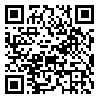BibTeX | RIS | EndNote | Medlars | ProCite | Reference Manager | RefWorks
Send citation to:
URL: http://irj.uswr.ac.ir/article-1-210-fa.html
Objectives: Cerebral palsy (CP) describes a group of disorders in the development of movement and posture in the developing brain. The main aim of this study was to determine the distribution of motor impairment and associated disorders in a population of children with CP.
Methods: This study was carried out in 2011 during three months, on 200 CP children. Multiple sources of ascertainment were used, including medical records of patients who access at the major rehabilitation and special educational centers in Tehran and examination by rehabilitation team. Children were grouped according to motor type, topographic pattern according to the Surveillance of Cerebral Palsy in Europe (SCPE) definitions and classifications, Manual Ability Classification System (MACS) and Gross Motor Function Classification System (GMFCS) scales. In this study we evaluate impairments such as seizure disorders, hearing and visual problems, and cognitive issues.
Results: During the study period, 200 CP child (103 males, 97 females) aged 4-12 years were seen, with a mean (SD) age of 7.7(2.4) years. In this study spastic CP was the most common type (80.5%) and more specifically, bilateral CP (62.5%) was more common than unilateral (18%). With respect to the MACS classification, level IV (23%), and to the GMFCS classification also level IV (30.5%) was the most common.
Discussion: Bilateral spastic CP was the most frequent type that had the worst motor problem, and difficult treatment, so it seems that the health care system should pay more attention to perinatal insults for prevention of CP in our population.
دریافت: 1390/7/1 | پذیرش: 1390/8/14 | انتشار: 1390/9/10



